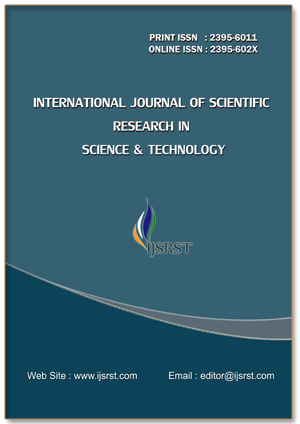Composition and Formation Process of School Management Committees in Lower Dibang Valley district, Arunachal Pradesh: A Comparison with RTE Act, 2009 Norms
DOI:
https://doi.org/10.32628/IJSRST2512327Keywords:
Students, Teachers, Parents, Community Members, SMCs, Lower Dibang Valley, Arunachal PradeshAbstract
The School Management Committee (SMC) is a statutory body responsible for ensuring the effective governance of schools, particularly in government and government-aided institutions. It plays a vital role in school administration, fostering collaboration between teachers, parents, community members to enhance the smooth functioning of schools, share the decision making and quality of education. Its primary responsibilities included overseeing academic performance, managing resources, implementing policies, and addressing the needs of students and staff. By promoting transparency, accountability, and community involvement, the SMC contributes to the overall development of the school, enhancing the quality of education and creating a conducive learning environment. The study highlights the significance of the SMC in bridging the gap between school administration and the community, ultimately driving institutional growth and student success of Lower Dibang Valley district of Arunachal Pradesh.
📊 Article Downloads
References
Bakwai, B., & Yusuf, A. (2016). School-based management committee strategies and infrastructural development in Zamfara state basic schools. International Journal of Tropical Educational Issues, Maiden Edition, 96–115.(ResearchGate)
Bhatia, S. K., & Ahuja, A. (2004). School organizational management. Surjeet Publications.
Carlitz, R. (2016). Promoting active engagement of school management committees in Tanzania: A research proposal. Center for Effective Global Action.
Chaube, S. P., & Chaube, A. (2007). School organisation (2nd ed.). Vikas Publishing House.(Amazon)
Diwan, R. (2003). Community participation and empowerment in primary education. Sage Publications.(Internet Archive)
Ghosh, P. (2017). Challenges in the implementation of the school management committees: A case study of accountability initiative 2016. Accountability Initiative.
Jerry, A. (2015). Functions of the school management committees: A comparative case study of two community-based schools in Ghana. University of Oslo.
Kajubu, G. (2015). Ineffective school management committees breeding decline in education standards. Uganda Radio Network.(World Bank)
Kaushik, V. K., & Sharma, S. R. (1997). Teaching of elementary education. Anmol Publications.
Khan, A. (2006). Role of school management committee in strengthening relationships between the school and local community in a community-based school in Pakistan. Aga Khan University.
Kisembo, P. (2012). The impact of community participation on academic performance in Uganda’s primary education: A case study of school management committees and parent-teacher associations in Kayunga District. University of Bergen.
Kumar, R. (2016). Roles and functions of school management committees of government middle schools in district Kullu of Himachal Pradesh: A case study. Scholarly Research Journal for Humanity Science and Language.
Mohanty, J. (2011). School administration, supervision and organisation. Shirpa Publications.
Mukhopadhyay, M. (2005). Total quality management in education (2nd ed.). Sage Publications.(Amazon)
National Council of Educational Research and Training. (2014). What is RTE? Some ways of making education accessible. In Elementary education: Perspectives and practices (pp. 88–106). NCERT.
Ndou, N. F. (2008). The role of school management teams in curriculum change management. University of South Africa.
Opande, B. (2013). Influence of school management committees’ motivational practices on Kenya Certificate of Primary Education performance in Suba-West Division, Migori District, Kenya. National Council for Science and Technology.
Owine, O. M. (2012). Factors influencing effectiveness of school management committees in primary schools in Karemo Division, Siaya County, Kenya. University of Nairobi.
Panda, U. N. (1988). School management. Ashish Publishing House.(IJRPR)
Ramani, K. V. (2013). A text of educational management. Wisdom Press.(Goodreads)
Rao, G. (2007). Principles of primary school administration. Sonali Publications.
Sethi, S., & Mudgal, R. K. (2017). A study on role of school management committee as mentioned in Right to Education Act, 2009 among the municipal corporation primary schools of Delhi. New Delhi Publishers.
Sharma, R. A. (1995). Elementary education: Experiences and expectations. Kanishka Publishers.
Singh, U. K., & Sudarshan, K. N. (1996). Primary education. Discover Publishing House.
Singh, A. (2015). A critical study of school management committees (SMCs) at elementary level in tribal areas of Himachal Pradesh. Shodhganga.(IJRPR)
Sood, N., & Singh, A. (2016). Functions of school management committees (SMCs) in elementary schools of tribal areas of Himachal Pradesh: Teachers' reflections. Scholarly Research Journal for Humanity Science and English Language.
Sukhia, S. P. (2009). Educational administration, organization and health education (22nd rev. ed.). Shri Vinod Pustak Mandir.
Jha, P., Ghatak, N., Minni, P., & Prasad, S. (2011). A study on the impact of training on the school management committee members and functioning of the SMC: Evidence from Jharkhand. Centre for Budget and Policy Studies.
Thapa, S. (2012). How functional are school management committees in the present context? Centre for Civil Society.
Verma, R., & Singh, S. (2014). Functioning of village education committee: Analytical study of selected villages of Punjab. Journal of International Academic Research for Multidisciplinary.
Verghese, B. V. (2009). Management of elementary school. Anmol Publications.
Yasoda, B. (2015). Mothers’ participation in school management committees of Nepal: A field survey in Nepal. Yokohama National University.
Downloads
Published
Issue
Section
License
Copyright (c) 2025 International Journal of Scientific Research in Science and Technology

This work is licensed under a Creative Commons Attribution 4.0 International License.
https://creativecommons.org/licenses/by/4.0




